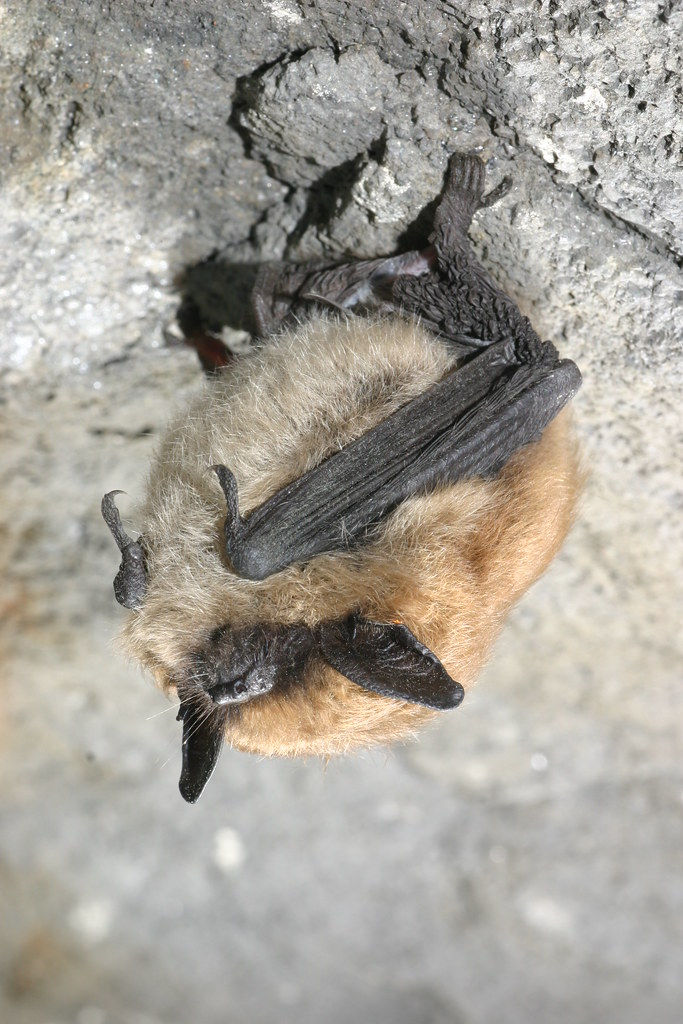Bats at Buck’s Ledge
- jsrhollis
- Sep 13, 2023
- 3 min read
Updated: Sep 13, 2023
A confirmation of what an extraordinary place Buck’s Ledge Community Forest is
By Julie Reiff
When Dr. Rick Van de Poll did an ecological assessment of Buck’s Ledge Community Forest (BLCF) last year, he indicated that there was a very strong likelihood of habitat for multiple bat species. He recommended an acoustic survey.
This summer, Cory Stearns, a bat biologist at Maine Department of Inland Fisheries and Wildlife (IFW), installed specialized microphones and recording devices in a very remote and inaccessible part of BLCF and near the parking lot trailhead. Two weeks later, he collected and analyzed the recordings using a special application to identify the high-frequency calls.
The results were very impressive. He found six of the eight bat species known in Maine:
Big brown bat (Eptesicus fuscus)
Little brown bat (Myotis lucifugus)
Eastern small-footed bat (Myotis leibii)
Hoary bat (Lasiurus cinereus)
Silver-haired bat (Lasionycteris noctivagans)
Eastern Red bat (Lasiurus borealis)
“We had pretty good results,” Stearns said. “It was exciting to see. There are a variety of different habitats up there, and the cliffs and rocky features makes it particularly attractive to the Eastern small-footed bat. We only ever find them in cliffs, talus slopes, rocky areas, the sorts of places where they roost in summer, so having those features is very attractive to them.”

On average, scientists they found 3.6 species per site state-wide. The confirmation of 6 different species of bats present is further evidence of the ecological uniqueness of BLCF. In addition to the geology, Stearns believes that the proximity to the lake could help with insect abundance levels and could increase overall bat diversity in the area.
IFW is doing a long-term monitoring study, revisiting sites every couple of years. The idea of the program is to see if there is any increase/decrease in the population and to see if the same species are still present or if there are any new ones.
“We would definitely like to go back to revisit that site,” said Stearns. “That effort is in the summer, focused on the maternity season, when they are breeding. But we are also interested in monitoring places in the winter to see where they are overwintering. We only know of a few traditional caves where bats are overwintering in the state, but we know they hibernate in talus slopes. We’d do another acoustic survey, but more intensive, with more microphones. When bats hibernate, they do emerge once in a while, but it’s a very rare occurrence. So, we can detect them with an acoustic microphone, but we’d want multiple microphones to increase our chance of catching them. There are no known caves on the site that we could enter, so we have to rely on acoustics.”
“It is really just extraordinary confirmation of just how special Buck’s Ledge is!” said Marcel Polak, a member of the Woodstock Conservation Commission that helped preserve the property. “There is no new specific management needed for the bats other than our long-term goal of developing an old growth forest on much of Buck’s Ledge Community Forest.”
There will be a celebration of Buck’s Ledge Community Forest on Saturday, October 14.
How You Can Help Bats:
Bats are a critically important part of the ecosystem and very beneficial to humans. One bat can eat up to 1000 mosquitoes in an evening. Here are some ways you can help:
Minimize pesticides on lawns and gardens - all eight species of bats that live in Maine eat insects. This also helps our bees and other important pollinators.
Maintain some mature forest on your property. Tree bats (Red, Hoary, and Silver- haired) roost in tree foliage of older trees. Older trees also can provide cavities and flaky bark for roosting.
Don't visit caves in winter (October 1-April 30)- this is the time of year that hibernating bats need to conserve all their energy. Any disturbance can cause bats to use up precious energy reserves and starve to death.
Find more information at www.maine.gov/ifw





Comments